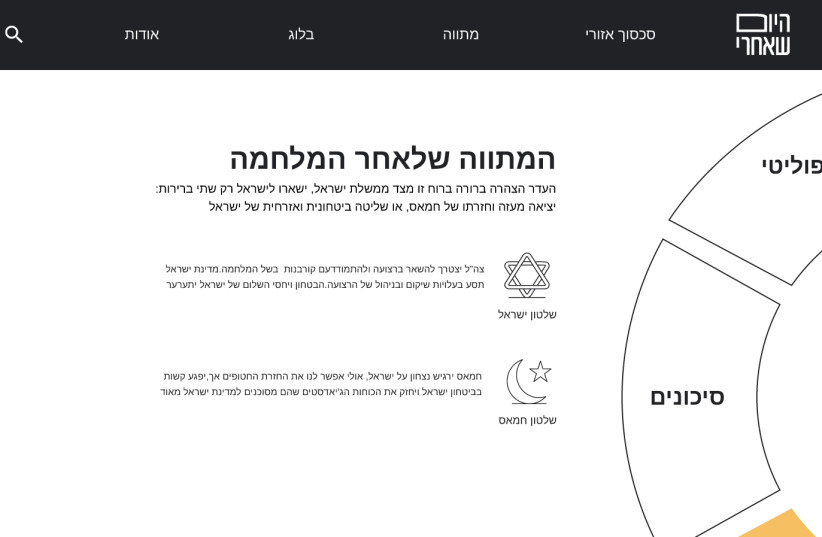Students at the Holon Institute of Technology (HIT) in Israel launched a project to simplify the complexities of post-war political agreements for the lay public. The venture, named "The Day After the War," revolved around developing an interactive website outlining a plan for regional agreements aimed at normalization with Saudi Arabia and other moderate Arab nations.
The project was conceived within the ambit of HIT's "Advanced Screen Design" course and represented a collaborative effort with the "Darkenu" movement and the "The Day After the War Forum." Both groups were at the forefront of rallying support for a regional initiative focused on transitioning civilian control and responsibility for the rehabilitation of the Gaza Strip to moderate Arab states, bolstered by United States support.
Guy Etgar, Vice President of Policy at Darkenu, highlighted the initiative's significance: "In our quest to empower the moderate and pragmatic majority in Israel, we recognized the necessity of demystifying this intricate issue for the general populace. The need for a regional agreement is paramount to counteract the Iranian Axis and its proxies across Gaza, the West Bank, Lebanon, Syria, Yemen, and Iraq. Our collaboration with Avivit Blumstein, the course’s instructor, opened a pathway to communicate this complex matter effectively to the public."
Displaying the students' technological, creative prowess
The project stood as a testament to the students' technological and creative prowess and their ability to navigate the complexities of Middle Eastern politics and present them in an engaging and understandable manner. Blumstein, the instructor of the "Advanced Screen Design" course, shared her enthusiasm for the project's scope and impact: "'The Day After' is a revolutionary project that diverges significantly from any other project in the 'Advanced Screen Design' course. It presented the students with the unique challenge of working with a real client and reinterpreting a complex topic without any existing references."
For students like Coral Or, the project represented a profound learning curve. "The challenge was formidable, dealing with a topic I was unfamiliar with, pushing me beyond my comfort zone," Or recalled. "Organizing the information visually, akin to assembling puzzle pieces, and making it progressively accessible and interactive for users, was a major hurdle."

The primary aim of "The Day After the War" was to make the nuanced and significant topic of post-war agreements more accessible to the public in a digestible, visually engaging, and interactive format. In doing so, it aimed to cultivate a broader understanding and encourage informed discourse on the subject.
Etgar lauded the contributions of students such as Coral Or, Gal Knaan, Amit Asyag, and Meitar Matzner to the final projects as "intriguing," successfully achieving the objective of presenting information in an easily digestible format.
